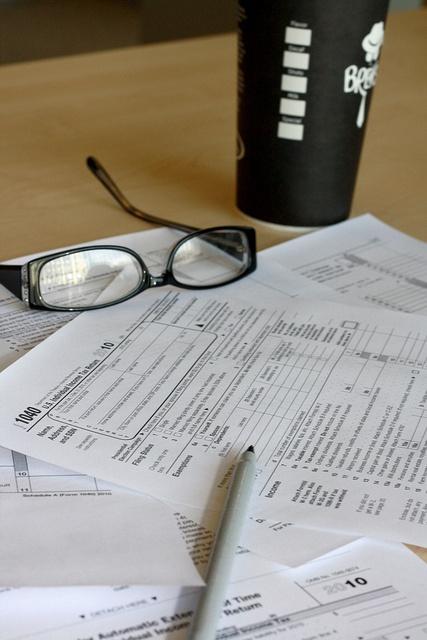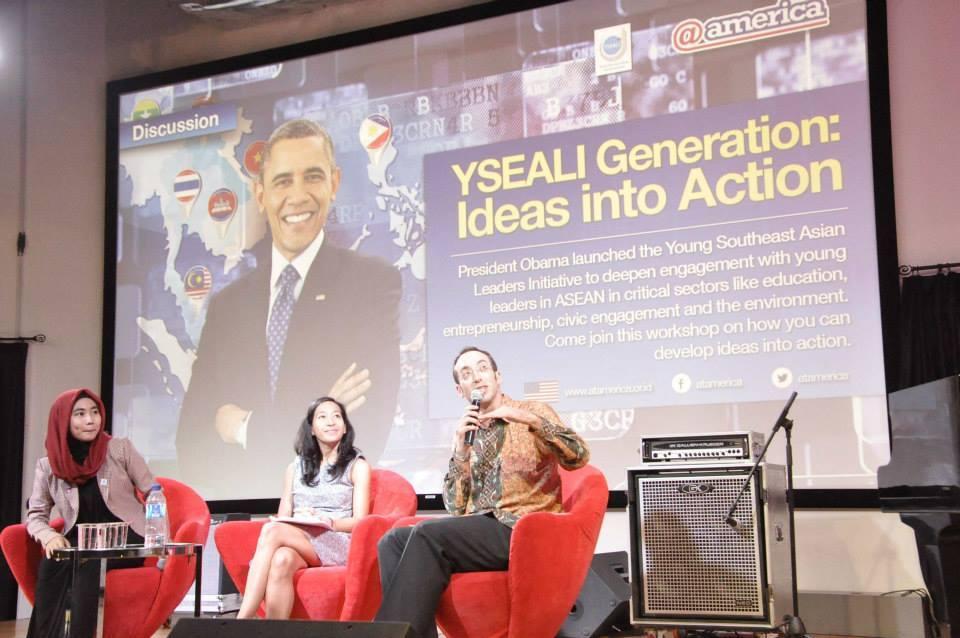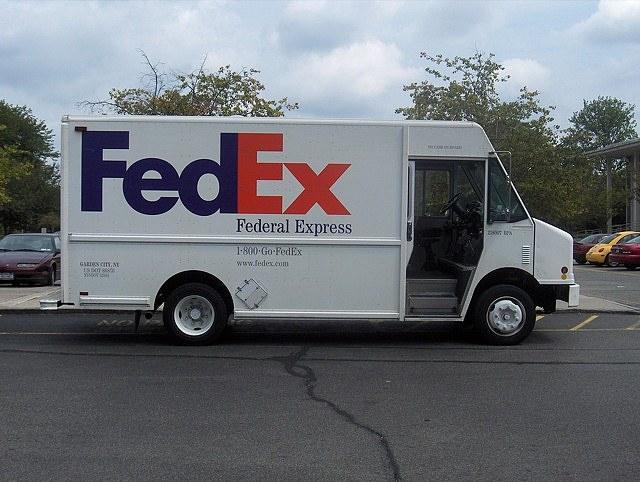Policy Points: How Tax Inversions Hurt Smaller Businesses


By Zach Bernstein
Everyone’s “favorite” day of the year is less than 24 hours away – Tax Day. And the big question is: Have you filed your return yet? (If you haven’t, stop reading this and go take care of that. This will still be here when you’re done.)
By now, most people have (hopefully, anyway) sent in their returns. Some have probably gotten a pretty decent refund; others might be a little disappointed at their bill.
One thing you can always count on come April 15 is some griping about how much Americans pay in taxes. Nobody likes paying them, after all. But as Oliver Wendell Holmes once wrote, “Taxes are the price we pay for a civilized society.” Everything people rely on the government for, from public safety to infrastructure, health care and education, is paid for with your tax dollars.
It’s easy for this to get lost in the mix – especially when you find out you owe more than you thought you would – but paying taxes is one of the most important things Americans do for their country. Name a program that matters to you, and your tax dollars -- and those paid by businesses -- help make it possible. What makes it work is that everyone recognizes the burden is not only on them: Everyone has taxes to pay, and everyone has to chip in for the services we all rely on.
Unfortunately, this Tax Day, some companies will shoulder a smaller tax burden than others -- a few will have none at all. It makes absolutely zero sense. And it’s all legal.
Turning the system on its head
One way companies can get their bill down to zero is through the process of a tax inversion. Here, a U.S. company buys a foreign competitor, then reincorporates the new company in the foreign country, where tax burdens are lower. This sleight of hand can have very real consequences for businesses.
This is exactly what people realized last year, when Burger King purchased Canadian company Tim Horton’s and announced it would place the new company’s headquarters in Canada – a move that could reduce its tax burden in the U.S. by hundreds of millions of dollars, according to a report from Americans for Tax Fairness. (Some other major companies, like AbbVie and Walgreens, backed down from their own attempts under massive public pressure.)
While this is completely legal, it’s also not something everyone can take advantage of. (How likely is it that your neighborhood coffee shop will reincorporate in Luxembourg?) Ultimately, this loophole allows larger corporations to cut their tax burden, leaving smaller businesses and consumers to pick up the slack. At the same time, those companies still get to take advantage of American infrastructure, first responders and courts – they just don’t pay their fair share.
The Obama administration has taken some steps to stem the tide of inversions, but eliminating the practice altogether would require an act of Congress, likely as part of broader tax reform.
Taxes for thee, not for me
Everyone agrees the tax code is in need of reform – it’s far too complicated, with too many tiny provisions that advantage certain groups over others, and too many loopholes that allow companies to make themselves a foreign company on paper, but not in practice. The only question is: What kind of reform efforts can pass? And inversions are a perfect place to start.
Not only are voters strongly opposed to the practice of inversions, small businesses don’t think it’s fair for some companies to have access to tax loopholes like this.
Past polling puts small business owners on the same side as most Americans. For one thing, 85 percent oppose a territorial tax system, which would exempt overseas profits from being subject to U.S. taxes. Another 64 percent, including at least 62 percent of Democrats, Republicans and Independents, support ending the practice of deferral, where profits can be shifted overseas without paying taxes.
Proud to be an American Company, a joint campaign between the American Sustainable Business Council (ASBC) and Main Street Alliance, is an opportunity for American businesses to protest inversions by pledging to keep their operations headquartered in the U.S. Any interested business owner can sign to show that they value the services our tax dollars pay for, and that having some companies get out of that burden just moves it onto everyone else – or risks cutting funding for the investments we need to grow.
After all, any business owner worth their salt can tell you that you have to spend money to make money – investing in new equipment, locations, or people. For all the talk about how the government should be run like a business, people tend to forget that businesses invest to thrive, and that means spending money in the expectation it will pay off in the long run. Government can, and should, do the same, but that means people – and businesses – have to pay for it. And our tax system shouldn’t allow some to take unfair advantage at the expense of others.
Tax Day may be a day everyone dreads, but it’s not fair that some larger companies should get to enjoy a much lower burden than others. That’s not the way to make sure America continues to grow. That’s why inversions need to end, now.
Image credit: Flickr/MoneyBlogNewz
Zach Bernstein is Research Manager for the American Sustainable Business Council.
Policy Points is produced by the American Sustainable Business Council. The editor is Richard Eidlin, Vice President – Public Policy and Business Engagement.
Obama Seeks to Bolster Education in Central America and the Caribbean


A meeting between President Barack Obama and Cuban President Raul Castro marked a historic Seventh Summit of the Americas in Panama City this past week.
At the summit, the U.S. Agency for International Development (USAID) announced it will invest $35 million “in a new higher education program designed to strengthen the capacity of technical training institutions in the region to provide market-relevant training for disadvantaged populations in Central America and the Caribbean.” The April 10 announcement is part of the Obama administration's overall effort to improve higher education and technical training across these regions.
While disparities in wealth, income and political power have come to threaten the foundations of American democracy and capitalism over the past three decades, they have continued to constrain socioeconomic development across Central America and the Caribbean long after nations in these regions gained their independence. Unemployment levels remain high and access to high-quality higher education and technical training low. Populations in these countries continue to swell, posing growing threats to social and ecological health and sustainability.
Providing broad-based access to affordable, quality higher education and technical training remains a glaring socioeconomic need, and that's precisely what the Obama administration, through the Young Leaders of the Americas Initiative and USAID's new higher education investment program, aims to help address.
Addressing a glaring socioeconomic need
“Fifty-eight percent of the population in Latin America and the Caribbean is under 35. Despite important economic gains over the last decade, significant challenges – including limited access to jobs, capital and advanced educational opportunities, and the availability of illicit employment opportunities – hold many youth back from reaching their full potential,” the White House highlighted in its Seventh Summit of the Americas' Fact Sheet.
Aiming to remedy the situation, President Obama on April 9 announced the launch of the “Young Leaders of the Americas Initiative (YLAI) to expand opportunities for emerging entrepreneurs and civil society activists.” Building on the success of similar educational initiatives in sub-Saharan Africa and Southeast Asia, “YLAI will incubate and accelerate the work of young business and civil society leaders from Latin America, the Caribbean and the United States,” the White House continued.
“YLAI will provide 250 fellowships a year to enable participants from the United States and the region to develop joint business and civil society initiatives. The preponderance of the fellowships will take place at universities, incubators and non-governmental organizations across the United States, while follow-on exchanges will send Americans to Latin America and the Caribbean to continue the collaboration.”
Seeding education and technical training
For its part, USAID highlighted that its new $35 million higher education investment program in these regions will build “on lessons learned from the $50 million initiative, Scholarships for Education and Economic Development (SEED).” The launch of that program was announced at the 2009 Summit of the Americas.
USAID's SEED program provides scholarships for youth and community leaders from Central American and Caribbean nations to attend technical training courses at U.S. educational institutions. For example, one SEED student – Ketia Hely from Haiti – completed an action plan to help communities purify drinking water. While working with communities on water purification, she aims to coordinate with community members and other groups to implement a more permanent solution.
Akin to SEED, USAID's new Central America-Caribbean technical training exchange program will foster greater understanding and cooperation, as well as provide difficult-to-obtain opportunities for youth and aspiring civil and community leaders throughout Central America and the Caribbean region.
“Promoting social development is a key aspect of the United States’ comprehensive approach to partnerships in the Western Hemisphere,” the White House stated. “Achieving regional stability and long-term prosperity in the global economy depends on equipping youth with the skills they need to compete in the 21st century workforce.
“There remains a significant need in Central America and the Caribbean for youth to access high quality education and vocational training. Through $68 million in new funding from USAID the United States is expanding education, training, and employment programs for youth throughout Central America and the Caribbean.”
*Images credit: The White House
Walmart and Feeding America Partner to End Hunger Through Service and Selfies


Walmart and Feeding America have joined forces this April to roll back the number of Americans going to bed hungry. Now in its second year, the Fight Hunger, Spark Change campaign seeks to donate up to $3 million to Feeding America and secure 75 million meals for food banks across the country during a critical time in the quarter when donations significantly decrease post-holiday season.
Food companies committed to the initiative, such as Campbell Soup, ConAgra Foods, General Mills, Kellogg Co., Kraft and Unilever, have identified 240 products that customers can purchase in-store to help donate to the cause. According to the disclaimers on the campaign’s website, for every participating product purchased at Walmart between April 6 and May 3, the manufacturer will donate 10 cents to Feeding America -- enough to secure one meal on behalf of local food banks.
During the campaign period, ending May 3, Walmart shoppers can also provide monetary donations of $1, $2 or $5 to a local Feeding America Food Bank at the register.
Public participation in the campaign doesn’t end at the register. Social media is also being used as a tool to help digitally-savvy shoppers participate in the initiative by tagging selfies with friends using #WeSparkChange. For every photo posted to Facebook, Instagram or Twitter using the campaign's hashtag, Walmart will donate $10 with a maximum donation of $1.5 million.
"Hunger is largely pervasive in this country,” said Kathleen McLaughlin, president of the Walmart Foundation. “Through this campaign, we want to engage customers more directly by creating a movement to spread awareness about this growing issue in our country.”
According to the USDA, 1 in 6 Americans still struggle with food insecurity. Considering that some states are pulling back accessibility to food stamps as the economy continues to “recover," stringent policies and continued unemployment for thousands of Americans will more than likely contribute to swells at already burdened food banks.
As the nation’s largest grocer with almost 5,000 stores across the country, Walmart is leveraging both its assets and its relationships with leading food companies to help ensure both private and public problem-solving on this very real and grim issue.
The call-to-action for brands and the general public to provide meals for those in need is noble. However, it begs the question as to how our society will close the food insecurity gap for those that are heavily dependent on a fluctuating food source.
When we look at this issue in its totality, the annual food need shows no signs of reversing its direction. In 2014 alone, the Feeding America network of food banks provided 3.3 billion meals to 46 million people. By 2018, the organization hopes to increase that number to 3.6 billion.
“When the 2007 recession hit, we saw a dramatic increase in the amount of people our network served,” said Bob Aiken, CEO of Feeding America. “Hunger increased by 46 percent, and there is still a sustained need for families getting by but still needing extra help.”
The Feeding America network alone spans over 6,000 food pantries in cities, suburbs and rural communities across the nation — eliminating the notion that hunger is merely the problem that densely-populated cities must solve.
In 2013, Feeding America released Map the Meal Gap, an interactive map that allows users to search their state and learn about neighbors and communities struggling with hunger and the food banks that serve them.
While a cash register donation and images shared across social media seem like only a drop in the bucket for a behemoth of a problem, both Aiken and McLaughlin are optimistic -- believing that hunger is totally solvable, albeit not unmet with extreme challenge. Their resolve? It’s going to take time and a lot of sleeves rolled up to the elbows -- by way of strategic partnerships with hyper-local business communities, government, research institutions and other charitable organizations committed to developing the necessary data and support systems to provide individuals with the help that they need.
To learn more about the Fight Hunger Spark Change initiative, how you can participate and to see how many meals have been secured thus far, visit the campaign website here.
Image credit: Walmart
FedEx Tackles Emissions: On the Ground and in the Air


When you're reviewing a sustainability report, you simply can’t focus on everything. You have to pick a focus. As I read through FedEx’s seventh annual Global Citizenship Report, I became very interested in its greenhouse gas (GHG) emissions reductions. Climate change is a very real threat, so it’s great when a global shipping company like FedEx does something to reduce its impact.
The No. 1 culprit: Aircraft emissions
Part of the company’s emissions reductions come through fuel efficiency, which it makes a top priority. That makes sense given that the main source of its scope 1 emissions is jet fuel. Through its FedEx Fuel Sense and aircraft modernization programs, the company saved over 100 million gallons of jet fuel in 2014, which avoided more than 976,000 metric tons of carbon emissions.
FedEx has over 650 airplanes, and reducing aircraft emissions is key to shrinking its overall emissions. To that end, the shipping company has a goal of reducing aircraft emissions intensity by 30 percent by 2020. So far, it has cut the intensity by 21.4 percent. Plus, its year-over-year aircraft emissions continued to decrease last year as absolute jet fuel use was reduced by over 34.4 million gallons.
The report attributes the emissions reductions to the Fuel Sense programs and modernizing its aircraft fleet. Launched in 2007, Fuel Sense has saved over 334 million gallons of jet fuel and avoided over 3.25 million metric tons of carbon emissions. In 2014, FedEx launched seven new Fuel Sense programs, such as reducing the weight it flies by transitioning to lighter containers and replacing pilots’ paper manuals with electronic versions. The heavier an aircraft is, the more fuel it requires.
Addressing vehicle fuel efficiency
Vehicles are the second biggest source of FedEx’s scope 1 GHG emissions. The company’s goal is to increase vehicle fuel efficiency by 30 percent by 2020, a goal it has nearly met by achieving a 29.5 percent increase.
Fleet upgrades are another way to reduce emissions. Upgrading to more efficient and cleaner vehicles is a focus of the company. There are several examples, including:
- Replacing 177 of its less efficient local pickup and delivery vehicles with more efficient Ford Transit Connects, saving 68,443 gallons of fuel and 626 metric tons of carbon emissions.
- Increasing the amount of Isuzu Reach vans in the U.S. by 1,700. The vans are lighter and have smaller engines, making them 35 to 50 percent more efficient than the vehicles they replaced.
- Adding 24 hybrid-electric vehicles, 171 electric vehicles and 10 compressed natural gas (CNG) Chevy vans to its U.S. fleet.
- Replacing over 450 vehicles in Brazil with more efficient models.
- Reducing fuel consumption on certain Caribbean routes by an average of 20 percent by replacing older vehicles with Toyota HiAce diesel trucks.
Buildings and scope 2 emissions
FedEx has about 5,000 facilities around the globe, which include air and ground hubs, as well as local stations. Electricity use at those facilities accounts for all of its scope 2 emissions. The company focuses on installing energy-saving technologies and on-site solar power. One of its energy conservation goals is seeking LEED (Leadership in Energy and Environmental Design) certification on all new U.S. FedEx Express buildings. So far, 10 FedEx Express buildings are LEED certified and six more are being reviewed for certification.
Another energy conservation goal is expanding on-site solar power and continuing to procure renewable energy for its facilities. FedEx has 11 on-site solar power arrays, which produced over 8 million kilowatt-hours of electricity in 2014 and avoided 3,145 metric tons of carbon emissions. At least two more solar power installations are planned for this year.
Image credit: myJon
Is Sleep the New Social Justice Issue?


It is a typical Monday morning for Maria Fernandes. It’s a little after 6 a.m., and she has just finished the overnight shift at Dunkin' Donuts. She pulls into the parking lot of a local convenience store for a quick nap. She texts her boyfriend, and he calls her back. They speak briefly about some upcoming plans with friends before saying their goodbyes.
Moments later, she reclines her chair, shuts her eyes and drifts off into a deep sleep. Splitting her time between three Dunkin’ Donuts locations, it is routine for Maria to nap in her car between shifts. A couple hours here, a few hours there; she’s grown accustomed to taking whatever rest she can get.
She sleeps with the engine running, most likely to keep the car cool in the summer heat. She keeps a container of gas in the back, just in case she runs out. Although her boyfriend warns her that this is dangerous, she can’t take the risk of waking up to an empty tank.
Unfortunately, his concerns materialized on the morning of August 25. The container of gas overturned, filling the car with deadly fumes as she slept. Maria Fernandes, 32, was found dead hours later. She was still wearing her uniform.
Maria’s death is an example of the stresses facing America’s low-wage workers. Adults who work multiple jobs are 61 percent more likely than others to report sleeping six hours or less. As health researchers continue to draw a connection between rest, work and poverty, it is clear that our society is becoming increasingly under-slept and overextended.
The dangers of sleep deprivation
Now, more than ever, Americans are starved for sleep. Up to 30 percent of adults report that they routinely sleep for less than six hours a night. There are over 40.6 million people who go to work everyday with far less than the seven to nine hours of sleep that's recommended by the American Academy of Sleep Medicine.
Many studies make it clear that sleep deprivation is a dangerous game. It is directly linked to an increase in morbidity and mortality. It weakens the immune system, increasing your chances of becoming sick. It can also lead to hypertension, high blood pressure and heart disease.
Depression, obesity and diabetes have all been linked to sleep deprivation. In some cases, it even leads to death. People who get less than six hours of sleep per night are four times more likely to die than those who get a full night’s rest, according to a study by the University of Pennsylvania.
A general lack of sleep decreases all types of neurologic functions. It decreases your ability to think clearly and rationally. A National Sleep Foundation survey shows that nearly 100 million sleepy Americans hop into vehicles each day. And each year, more than 100,000 motor vehicle crashes result in 1,550 deaths and 71,000 injuries due to drivers who fall asleep at the wheel.
The connection between sleep and socioeconomics
Research shows that individuals with lower socioeconomic status are more likely to have inappropriate sleep duration and poorer sleep quality. Lauren Hale, the editor of Sleep Health, explained that there are many possible reasons for this. “Hours spent sleeping are lost amid higher levels of anxiety, more financial insecurity, poorer health and less free time, with more time spent working low-income jobs and commuting to work.”
Sleep deprivation is directly associated with race/ethnicity and socio-demographics. African-Americans are over three times as likely as whites to report very short sleep, while Asians and non-Mexican Hispanics are two to three times as likely. Lower-income groups report very short sleep versus those who earn more than $75,000. Compared to college graduates, sleep deprivation is seen among all lower education levels. More education is associated with higher income, and higher income is associated with better physical health.
The effects of income on both mental and physical health are mediated by sleep quality. In many ways, sleep poverty is another form of social inequality. Short sleeping times directly correlate with scarcity in other areas such as money, time, food and opportunity.
The right to a fair wage
Maria Fernandes, like millions of others in her situation, had the potential to live a full, creative and productive life. Her inability to earn a living wage at one job forced her into an endless cycle of working multiple jobs, just to make ends meet.
Earning a little over $8 dollars an hour, she spent all of her time and energy working to pay the rent for a home she rarely slept in. In fact, she rarely slept at all -- sometimes going weeks at a time without a proper night’s rest. Because of this, her physical health and her mental well-being suffered. Perhaps if she had been a bit more alert, she could have prevented her death. Or perhaps if she earned a bit more money per hour, she could subsist on only two jobs instead of three.
The fact is: We live in an extremely polarized society when it comes to wealth and opportunity. The idea that everyone who works hard can make it is not just a myth, but a bold-faced lie. For many workers it doesn't matter how hard they work or how well they perform at their jobs, they will never escape the prison of poverty.
As long as a massive concentration of wealth is held in the hands of the few, we will continue to have extreme economic disparities. The harder it becomes for the working class to earn a living wage, the more we will waste one of our country’s most natural resources: the human potential.
Image credit: Flickr/Thomas Lieser
Report: Climate Change Poses High Risk for Low-Income Rural Communities


Lately, we’ve been seeing an effort to broaden the audience of the climate change discussion to reach “beyond the choir,” as it were, by highlighting the role the climate change in the daily lives of everyone. Last week, for example, President Barack Obama participated in a discussion of the link between climate change and public health.
Soon after, the Natural Resources Defense Council (NRDC) hosted a conference call based on its new report, Bridging the Clean Energy Divide. The call focused specifically on the challenges that climate change poses to low-income families, seniors and rural communities. Public health is a portion of this conversation, but it also includes financial impacts, both in terms of reduced expenditures and job creation.
None of it was rocket science, of course. If you live on a fixed income, fluctuations in energy prices can have a dizzying impact. Money not spent on electricity or fuel oil can be used to buy better quality food, or for self-improvement or health care. If you’re a farmer, flooding and droughts can devour your income. If you are poor, you are less able to withstand an onslaught of killer temperatures, or to bounce back afterwards.
Katharine McCormick, Midwest advocate for NRDC, talked about how, in 2012, a severe heat wave hit rural Maryland accompanied by powerful thunderstorms. The power was out in some areas for four days. Eighteen people died, mostly from heat stress. Air conditioning was essential, but those without back-up generators simply didn’t have it. The poor and the elderly are the most vulnerable to these events, especially in rural areas.
Some health impacts are more subtle. Studies conducted by the EPA and the American Lung Association predict that cutting carbon pollution will avoid 6,600 premature deaths, 150,000 asthma attacks, 3,300 heart attacks, and more than 490,000 missed school and work days each year.
When we speak about clean energy, it’s important that we include energy efficiency in that category. Financially speaking, an investment in energy efficiency is a gift that keeps on giving: An energy efficient home, equipped with the latest energy efficient appliances and HVAC systems, improves the resiliency of families and helps them to better ride out fluctuations in energy prices. What’s often overlooked is the fact that when one customer invests in energy-saving technology it helps all customers by reducing the capacity overhead a utility must carry to meet peak demand. In this way, programs like senior citizen weatherization or zero-interest loan programs like How$martKY, which allow people to upgrade their homes for efficiency, benefit the entire community.
Likewise, renewable energy can do even more to smooth out the bumps in the road, whether it’s installed on the rooftop or at the local utility. Of course, wind farm development is also contributing to economic gains in many rural areas. The EPA’s Clean Power Plan, while putting pressure on coal-mining areas, will provide all these benefits at the same time.
"The poor and elderly already devote a large portion of their income to energy costs, (8.3 percent versus the national average of 2.9 percent), but that doesn't have to be the case," Kat McCormick said. "The reliability of fossil fuels has been overstated. When we diversify our energy portfolio and invest in efficient and renewable sources like solar and wind, we help improve reliability, decrease our dependence on the market, and insulate people -- especially the poor -- from unpredictable coal and gas price spikes."
Reverend Dr. Gerald Durley, who also participated in the call, upped the ante when he said:
“When unprecedented weather disasters devastate the poorest neighborhoods in places like New Orleans, New Jersey and New York, [climate change] is a civil rights issue."Susan Casey-Lefkowitz, who writes for NRDC, summed it all up nicely: “Fossil fuel companies and their allies in Congress are trying to block carbon limits at every turn,” even as “vulnerable populations lack access to clean energy.” But, “the solution is not to continue our dependence on dirty fossil fuels but to make clean energy more accessible and affordable. The EPA's Clean Power Plan [combined with] state leadership will help achieve that."
Image credit: Daniel Foster/Flickr Creative Commons
Mining: Inclusive Investment for a New Triple Bottom Line


Editor's Note: This post originally appeared on the CSR21 blog.
By Joseph Kirschke
The biggest mining super-cycle in recent memory, beginning in the early 2000s and fueled by unprecedented emerging market growth, is now history: Head-counts have been slashed, fleets parked and exploration budgets flattened, with profits falling by 71 percent to $20 billion by 2013. This year, with the plunge of copper – and most base metals – the bottom fell out completely.
In the background, a different type of erosion has long since begun: Wholesale sustainability cutbacks – the timing of which could hardly be worse. A 2014 Harvard study crystallized the urgency, reporting projects worth between $3 billion and $5 billion posting $20 million losses from weekly delays. Embedded ever-deeper in frontier nations amid resource depletion, moreover, the true price for community conflicts is increasingly impossible to calculate – not least after production resumes at major operations.
Recognized as crucial to risk, reputation, access to capital and, increasingly, financial performance, sustainability is no stranger to the mainstream – with 72 percent of the S&P 500 and trillions of “responsibly-managed" assets in agreement. In mining, one of the world’s most balance-sheet driven, upstream sectors, meanwhile, the cost-benefit is often far less clear – yielding a unique opening for impact investors and others attuned to shared value in a circular economy.
On a planet hosting more than 2,000 mechanized mines, “writ-large” potential lies in the balance, according to people like Gavin Power, deputy director of the United Nations Global Compact, a partner to the U.N. Principles for Responsible Investment (UNPRI) which represents more than $34 trillion in assets under management.
“The industry has an historic opportunity to be the solution to global problems,” he said. “It covers labor, the environment, anti-corruption; it’s all-encompassing” – as are the UNPRI’s 1,250 signatories which represent 20 percent of global capital markets.
With its massive gold and platinum reserves – and more than 90 major protests over basic services through 2014 – South Africa provides an ecosystem of case studies. Top miner Anglo American, for one, has transformed operations wastewater into potable water for 80,000 villagers east of Johannesburg in a reverse-osmosis project now doubling in size – and being replicated nearby by giants BHP Billiton and Glencore. Other local Anglo initiatives address poverty through business grants in addition to HIV/AIDS prevention and treatment.
Participation by non-traditional investors in such endeavors is emblematic of a true triple bottom line: ensuring lasting positive impacts and maintenance of a social license to operate – ahead of a resurgence in commodities growth. Despite a weak global economy and a stockpiling of metals on the Chinese mainland, prospects for mining have seldom been better for long-term investors – and economic inclusiveness at its best.
Social impact entrepreneurs, whose cross-industry activities advance social performance before financial returns, can make a decisive difference. “Your company may be the first into a market where structures are weak, talent scarce and customers suspicious – while your trial-and-error may develop health care providers that can touch tens of millions of lives,” Matt Bannick, managing partner of Omidyar Network, wrote in the Stanford Social Innovation Review.
Corporate social responsibility (CSR) in mineral extraction itself is relatively new – even newer is the risk mitigation that drives institutional investment decisions, particularly among larger European banks, insurers and pension funds. Yet despite its dire need, systematic, proactive financial engagement remains elusive – even as successful examples abound worldwide.
As a nation, Chile, the world’s leading copper producer, is an innovator: In 2011, for instance, Santiago’s Mining Ministry joined 250 Chilean businesses to transforming them into world-class suppliers. Through $54 billion in investment, the World Bank now forecasts the 709,000 jobs servicing and supplying the mining industry to grow “substantially” – generating across-the-board prosperity any financier could wish for.
Owing to its vast mining industry, Chile is further energizing extractive firms across the continent – and Africa, Australia and beyond – to economize through renewable power. Here, too, opportunities for synergy are limitless – especially given the recent announcement of a global investor coalition committing $600 billion to carbon tracking and reduction by December.
One of the biggest challenges to aligning mining with the impact investing community in institutional terms is purely practical: In recent years, sustainability reporting has made impressive progress, yet beyond voluntary frameworks, categorically concrete and enforceable benchmarks remain elusive – despite extensive global efforts.
But the greatest gap is a socio-cultural one. Impact investors and miners inhabit separate worlds: One is often high-profile and cause-focused with deep commitments to change; miners, on the other hand, are introverted, hardworking and usually stubborn – their data-driven calculations, often bound by convention and legacy, lie almost exclusively below ground.
Yet both are united where it matters most – by a relentless, can-do attitude. And while standards and metrics mature, possibilities stand to resonate amid undeniably cyclical opportunities – and prospects for investment-driven change by the mining sector continues to swell.
Image credit: Flickr/dorena-wm
Joseph Kirschke is a consultant who advises mining companies on corporate social responsbility and is a former news editor at Mining Media International, a Jacksonville-based publishing house.
California Drought Threatens Los Angeles Denim Industry


About 80 percent of California’s water sustains agriculture, but Sacramento is putting the onus on the state’s businesses and residents to find even more ways to conserve this precious resource. One sector scrambling to find even more ways to conserve water is Los Angeles’ denim industry. Of the approximately 40,000 people the garment and fashion industries employ in Los Angeles County, many work for companies that design and sell high-end blue jeans that are sold across the country and exported around the world.
These companies have already been challenged because of past threats of a European tariff on American denim jeans, as well as the constant specter of jobs going overseas in the name of slashing costs. Denim manufacturers and blue jeans designers in the Southland, however, continue to be resilient. But now concerns over water restrictions due to the California drought have put many of these companies on edge.
The push to conserve water began long ago at the start of the industry’s supply chain. Companies such as 10-year-old Blue Creations, a denim manufacturer in Carson, have started to use alternative methods to treat denim other than using copious amounts of water. Machines that use ozone in place of some, if not all, water used in treatments such as stonewashing have reduced the need for water, chemicals and energy. Other companies, including American Apparel, began to incorporate more low-impact dyes that have little or no toxic chemicals into their manufacturing processes. Such dyes have a higher fabric absorption rate, nixing the need for mordants, the substances that help affix dyes to textile fibers.
One of the larger denim manufacturers and designers in the Los Angeles area is AG Jeans, a popular brand that offers jeans that cost up to US$300. The company has already tried to minimize its environmental impact through the use of more sustainable fibers, such as Tencel and Modal, and has invested in technologies in order to reduce its water consumption. According to the company, its use of ozone technology to treat denim has saved millions of gallons annually — 50 percent since implementation in 2010.
Companies such as AG Jeans face many challenges in order to meet the expectations of quality their customers demand because those buyers are not necessarily focused on the sustainability of their garments. At the same time, they are offering decent paying jobs in a sector that has largely departed from the United States. Onerous water restrictions and the threat of higher rates -- and even fines for excessive water use -- could push these companies to lay off local employees and move overseas, perhaps to countries with lax regulations that are also suffering from water scarcity.
One California company that does not manufacture jeans in Los Angeles but has been ahead of the curve when it comes to water conservation is Levi Strauss. The company claims its “Water<Less” process has saved 1 billion gallons of water since 2011. But Levi’s has also tried to educate consumers about how they can be more water savvy by pointing out that blue jeans have a water impact long after their point of sale. Emphasizing the point that excessive washing is actually detrimental to the quality of denim, the company’s CEO urged its customers to “stop washing your jeans” at a sustainability conference last year.
As the old saying goes, competition is good for the marketplace. Companies such as Levi’s have an opportunity to share their best practices and ideas with smaller firms, which in the long run could strengthen the industry and help it remain a vital part of California’s culture and, of course, economy.
Image credit: AG Jeans
Philip Morris Sues Uruguay Over Anti-Smoking Campaign


One can surmise the many things tobacco companies have in common with fast food corporations, including the fact they must expand their business abroad while sales stagnate on both sides of the Atlantic. The result is that the World Health Organization estimates that 70 percent of the 8.4 million deaths that will be attributed tobacco use in 2020 will occur in developing countries. One country that has long run an aggressive anti-smoking campaign is Uruguay.
Former and now current President Tabaré Vázquez, an oncologist, was part of the Uruguayan’s government effort to convince its citizens to stop smoking. The results were dramatic: Tobacco use declined rapidly between 2006 and 2009, and it kept falling during the administration of his successor and now predecessor, José Mujica. Among the many tactics was the adoption of graphic, and even gruesome, warnings on cigarette packages. In addition, cigarette companies can only sell one brand of smokes within Uruguay: branding with words such as “light,” “extra,” “green” or “gold” are prohibited because they allegedly convince consumers they are smoking a cheaper option. Philip Morris International, in turn, has responded with a fully-loaded litigation assault on the tiny country of 3 million.
Both the tobacco industry and its critics are keenly watching how Philip Morris’ lawsuit against the Uruguayan government will unfold. Philip Morris’ complaint is that the Uruguayan regulations requiring 80 percent of a cigarette pack to be covered with health warnings and images leaves no room for the company’s trademarks. The company is suing Uruguay under the bilateral investment treaty between Uruguay and Switzerland, and a ruling should come during the third quarter of this year. The International Center for Settlement of Investment Disputes (ICSID), under the trade agreement between two countries, will settle the lawsuit by binding arbitration.
For advocacy organizations such as Avaaz, which is running a signature campaign in support of Uruguay’s policies, this dispute is a classic David versus a corporate Goliath fight. After all, Uruguay’s GDP in 2013 was about US$55.7 billion, while Philip Morris’ revenues the same year totaled approximately US$80.2 billion. Avaaz and other anti-smoking advocates have accused the ICSID of a history of ruling in favor of corporate interests. Also in Uruguay’s corner are Bloomberg Philanthropies, the eponymously named foundation launched by New York City’s former mayor, and the Gates Foundation. These organizations argue that if Philip Morris wins its legal battle with Uruguay, smoking bans in other countries will come under threat.
Philip Morris, however, responds that the company supports regulation of smoking in public spaces, some graphic warnings and advertising restrictions; however, the 80 percent health warning requirement and limit on the number of brands “restricts competition to the detriment of foreign investors” and are deal-breakers. Philip Morris is seeking US$25 million in damages for Uruguay’s “decision to disregard its commitment to investors.”
Picking a fight with a small country is certainly an interesting tactic for Philip Morris, which posts extensive information about its corporate social responsibility programs on its website. While there is ample information about the company’s sustainability work, the link to how it helps nonprofits with “critical social issues” draws a blank. How fitting for an industry that has long suffered a public relations image crisis, as unleashing lawyers to undermine a country’s sovereignty leaves Philip Morris once again appearing to be little more than a corporate bully.
Image credit: Ministry of Health of Uruguay; Leon Kaye
New Platform Brings E-Commerce to the Seafood Industry


Editor’s Note: This post is an entry in the 5th Annual iPura Tweet & Blogfest at Seafood Expo 2015. It originally appeared on The Passionate Foodie. Read all of the Blogfest entries here.
By Richard Auffrey
Not all of the interesting stories you'll find at the Seafood Expo North America (SENA) come from the exhibitors. Sometimes intriguing tales come from other attendees. When planning my schedule for SENA, I spoke to a number of people on Twitter, trying to set up meetings for the Expo to hear their stories. One of the companies which interested me was Ocean Executive, and I made plans to speak with them at SENA. At the Expo, I met with founder Mike Budreski, M. Nicholas Budreski, Mike's brother and a seafood distributor, and Brian Fong, who heads up the company's sales and marketing.
Mike and Nicholas Budeski both come from Nova Scotia and have a background in the fishing industry. Their father actually started the sea urchin business in Nova Scotia. Eventually, Mike moved to New York City, getting a job in finance in the energy industry. He now works in the stock market, dealing with energy stocks. During the course of his work, he realized the advantages and efficiency of the trading platform technology. He saw that numerous other industries utilized similar trading platforms. With his background in fishing, he started to consider how that industry could benefit from a trading platform, too.
With his entrepreneurial spirit, Mike forged ahead to create an electronic trading platform to centralize the seafood marketplace -- and bring e-commerce to an old-fashioned industry. He brought in Brian Fong, who has a background in marketing, and Brian's brother, who is a developer and helped design the program. They received some seed money, spent over nine months in development, and currently have a Beta version of their product. They have about 50 users from all around the world, and they hope to have 500 to 1,000 within a year.
The basic idea is to take the current process of seafood sale transactions and place it online -- making it more efficient, quicker and better for record keeping. The new platform is a business-to-business marketplace with two main sections: private and public auctions. The private auctions will allow sales to current customers, while the public auctions will permit new customers to purchase seafood, too. These are anonymous transactions, though each party involved will have the relevant data that is needed. The seller will select a cold storage area as a trading hub, and as soon as the transaction is completed, title will pass.
With the current system, sellers need to contact potential buyers through phone calls, emails and such, which can be time consuming. The trading platform will eliminate the need for all that extra contact, saving the seller plenty of time. For this ease of transaction, there will be a fee, based on whether it is a private or public auction. For private auctions, there is a flat transaction fee of $250, while public auctions cost 1 to 2.5 percent of the cost of the sale, depending on the amount of the sale. Sales over $100,000 incur the 1 percent commission.
The platform will focus on frozen seafood, at least at first, as it is more of a commodity and there are no time pressures to sell it immediately as there would be with fresh fish. Users can sign up for free in only a few minutes, and the only fees they must pay are the transactions fees. Ocean Executive does a background check on all users, checking on the economic status of the user's company. They want a system that users can trust.
Besides the benefits of a more efficient marketplace, the platform will also be the source of detailed analytics. It will aggregate a wide range of data on all of the transactions that pass through the system, from prices to trading values. Users will have access to all of these analytics for free -- a valuable business commodity. Much of this information is unavailable currently as no one is really gathering and collating it.
As the trading platform is still in Beta, that means it will be fine tuned in the coming months, and the company hopes to have Version 1.0 ready in approximately six to eight months. Trading will start on the platform in the near future. At this time, Ocean Executive has no real competitors. Allegedly, a similar platform was created about 15 years ago but failed, though we live in a very different time now than we did then. E-commerce is huge now, and I believe an electronic trading platform is warranted for the seafood industry. Sometimes all a good idea needs is good timing.
I'll be paying attention to what happens with Ocean Executive, to see whether their ideas help to transform the seafood industry.
Image credits: Richard Auffrey
Richard Auffrey is a life-long resident of Massachusetts, a licensed attorney, and has been involved in food and wine writing for about nine years. Beside my food, wine, saké & spirits blog, The Passionate Foodie, Richard has also written a food & wine column for the Stoneham Sun newspaper. In addition, he’s been published in other periodicals, including the Beverage Media, Drink Me,Boston Scene, North End Scene, and the Valley Patriot. He has also been a freelance contributor to the Medford Patch and Melrose Patch.